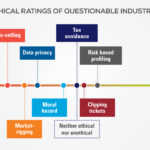5 Reasons for Cloud Transformation
Here’s a remarkable statistic: less than 10% of today’s business computing workloads have moved to…
By Steve Daheb
5 Reasons Cloud Transformation Is About to Take Off
Here’s a remarkable statistic: less than 10% of today’s business computing workloads have moved to the cloud.
How’s that for perspective? For me, it speaks to the fact that the move to cloud is a journey—more of a marathon than a sprint—and the overwhelming majority of companies are still in the very early stages of that journey.
Despite this, it’s also clear that the pace for cloud transformation is now picking up dramatically. And that makes perfect sense. Cloud changes almost everything we know about business and IT, about work and life. It changes how businesses run and how people work by creating new ways to deliver technology and services, and build new applications and delivery models. Cloud creates new engagement models that deliver exceptional experiences. In a world where companies and workforces become more mobile and social by the hour, cloud creates new ways for people to collaborate along a path that didn’t exist until now. It delivers new insights that empower us to explore, discover, innovate, and drive positive change across all businesses and industries.
For IT leaders, the challenge is to find their own path to the cloud, based on their own specific needs and not on some cookie-cutter approach. Thankfully, new cloud innovations can create a personalized path to cloud, and can also do it in ways that make genuine cloud transformation much more realistic today than ever before. Below are five reasons I think smart organizations will see dramatic gains by embracing cloud computing.
1. Cloud offers more choices
Customers will demand choices when it comes to cloud—public cloud, private, hybrid, and the ability to manage all workloads identically across those environments. There’s no such thing as “one-size-fits-all” when it comes to cloud. Some workloads will move lift-and-shift style to a cloud platform and infrastructure. In other cases, companies may want to do dev/test in the cloud but move to an identical on-premises environment for production. Others might want the flexibility of pay-for-use cloud services, managed by a cloud provider, but with the physical hardware residing in their data center, due to regulatory concerns. When it comes to cloud, choice and flexibility will drive adoption.
2. Cloud = more than the sum of the parts
When you look at how some companies approach cloud, it’s not uncommon to see multiple apps from multiple vendors all pieced together in a way that just recreates silos. Wait. Wasn’t cloud supposed to make things easier?
It was—and it can. But what’s required is a fully integrated environment that spans all layers of the cloud—IaaS, PaaS, and SaaS—and a suite of engineered systems designed for cloud that serve as the foundation of a cloud infrastructure. We believe an integrated cloud will unlock cloud transformation across all industries as it removes barriers to innovation. When technology can work together to provide real solutions, when applications can be integrated and extended to meet our needs, when information from different sources can be unified for real insights, when people can collaborate seamlessly, when we can securely access applications and information from any location and device, when we can unite traditional premise solutions and the cloud, then we become much greater than simply connecting the various pieces.
3. Security as an enabler, not a deterrent
Today, security remains a reason for some companies to avoid using cloud services. Aggressive cloud adopters, however, are turning that idea on its head—realizing security can go from being a deterrent to cloud adoption to being an enabler. That’s because cloud providers have much greater expertise and resources to keep up with the ever-changing threat landscape. The average organization, for example, doesn’t have the capability to build data security for cloud services at the application layer, but also at the database and even the microprocessor level. IT leaders will never surrender their information security strategy, and they shouldn’t. Day-to-day execution of information security, however, will be increasingly left to cloud providers.
4. Cloud accelerates innovation
Perhaps some companies have an on-premises application they haven’t upgraded in two years. Or maybe they’ve stopped upgrading it at all. Their finance, supply chain, or HR departments might say their apps still “get the job done,” but should they be satisfied with just checking the box for these essential resources? Moving to cloud platforms speeds innovation in several ways. With cloud, companies can implement new cloud apps in months, not years. With updates multiple times a year, teams are always using the latest versions of software, rather than continually falling behind the state of the art. Instead of spending time patching software and servers to run outdated apps, IT teams can spend time helping HR, finance, and other teams make the best use of new features, data, and analysis. That’s how innovation takes root in an organization and becomes part of a culture.
5. The flexibility of an open cloud
Another factor driving cloud adoption will be the flexibility that comes from an open cloud, which will allow companies to use existing skill sets and talent across all environments and technology stacks. With that kind of flexibility, companies are able to run all workloads, and connect all applications and data. Having options to move current IT environments to modern frameworks is fundamental to cloud growth. In particular, organizations require their cloud platforms to accommodate standards, such as Docker or supporting VMware, that increase their options. I believe success in the cloud will come from the ability for each company to forge its own unique path, because in truth, there’s no single map to cloud. Our mission as providers is to help customers discover their paths, regardless of where they are today. Ultimately, an integrated solution must span both on-premises and cloud, because applications and information live in both—and potentially will co-exist for years. Customers need the flexibility to move seamlessly between both environments.
Steve Daheb is Oracle Senior Vice President, PaaS and IaaS Business Groups






